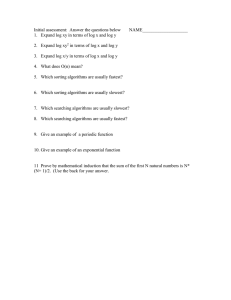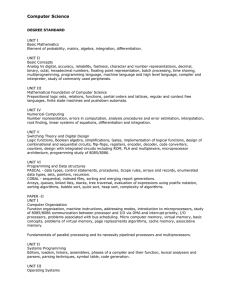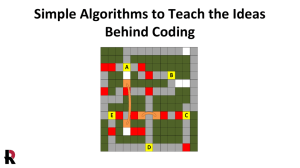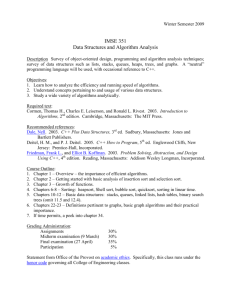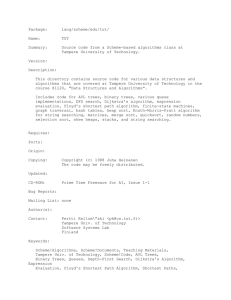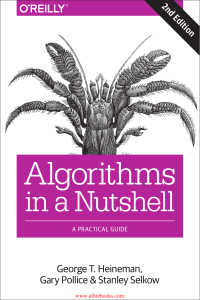Fundamentals of Algorithms Fall 2009 log x + log y
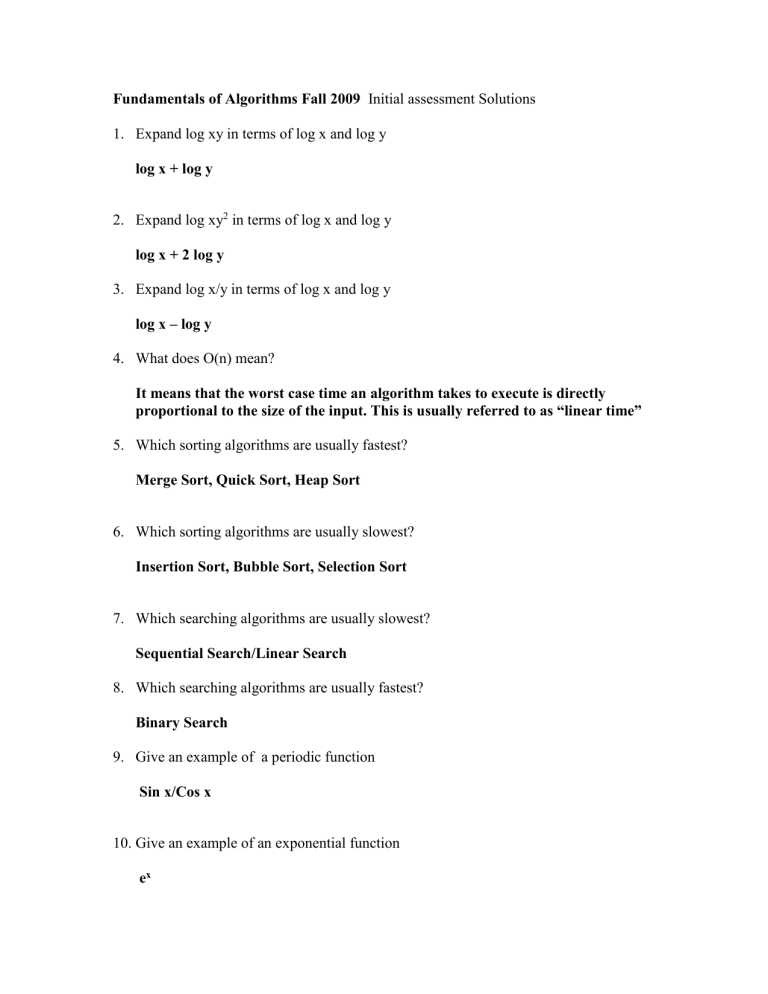
Fundamentals of Algorithms Fall 2009 Initial assessment Solutions
1.
Expand log xy in terms of log x and log y log x + log y
2.
Expand log xy
2
in terms of log x and log y log x + 2 log y
3.
Expand log x/y in terms of log x and log y log x – log y
4.
What does O(n) mean?
It means that the worst case time an algorithm takes to execute is directly proportional to the size of the input. This is usually referred to as “linear time”
5.
Which sorting algorithms are usually fastest?
Merge Sort, Quick Sort, Heap Sort
6.
Which sorting algorithms are usually slowest?
Insertion Sort, Bubble Sort, Selection Sort
7.
Which searching algorithms are usually slowest?
Sequential Search/Linear Search
8.
Which searching algorithms are usually fastest?
Binary Search
9.
Give an example of a periodic function
Sin x/Cos x
10.
Give an example of an exponential function
e x
11 Prove by mathematical induction that the sum of the first N natural numbers is N*
(N+ 1)/2. [Ayodele Taylor]
Base case, n = 1
1* (1 + 1) / 2 = 1
Inductive hypothesis , n = k
Sum of first k natural numbers = k* (k + 1) / 2
TS : sum of first k+1 natural numbers =(k+1)((k+1) + 1) / 2
= (k+1)(k+2) / 2
= (k
2
+ 3k + 2) /2
Inductive step:
Adding (k+1) to both sides of the IH:
Sum of first k+1 natural numbers = (k(k+1) /2) + k+1
= (k
2
+ k / 2) + k+1
= k
2
+ k + 2k +2 / 2
= (k
2
+ 3k +2) /2
Proven!
